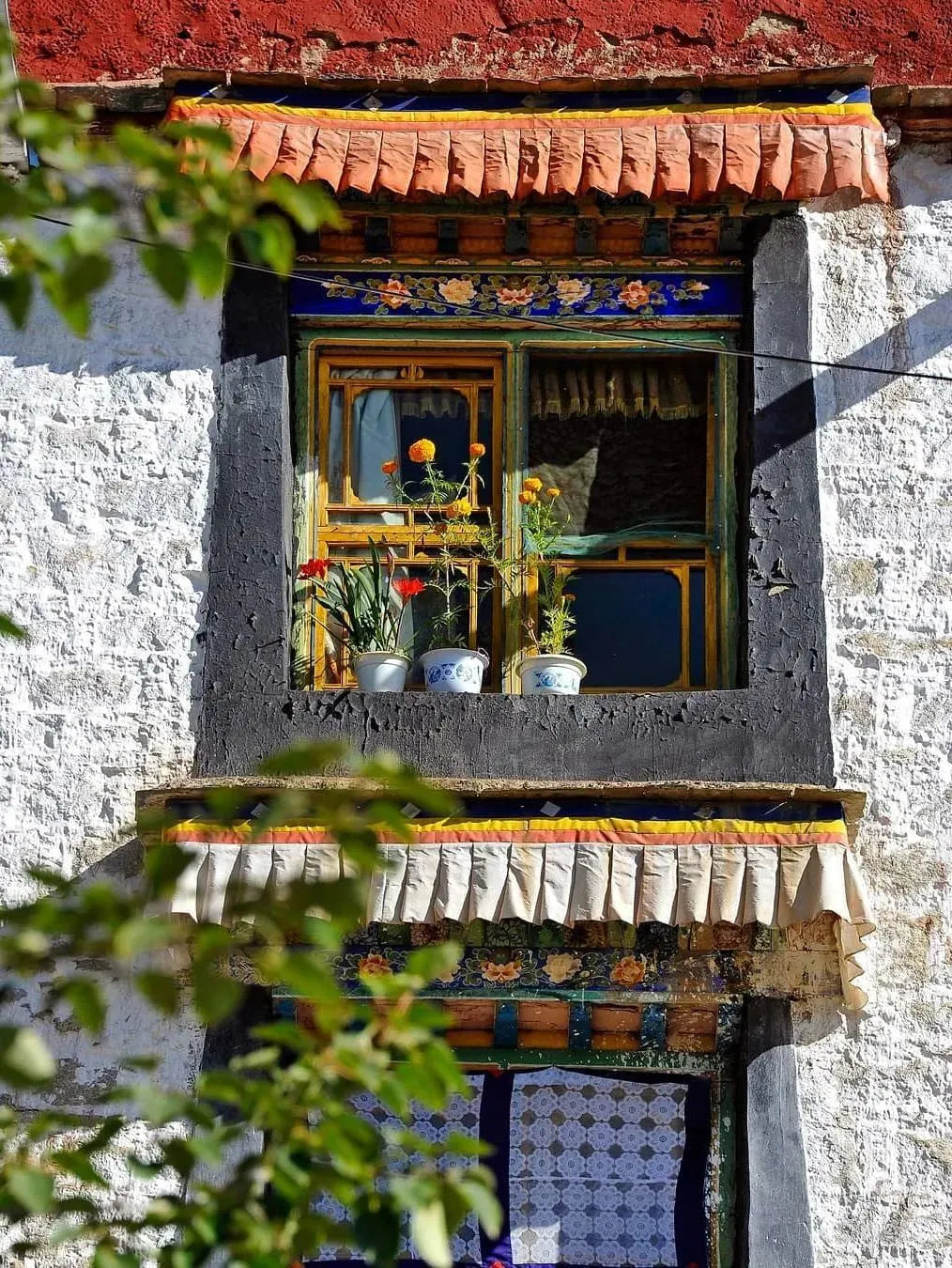
Interpretation of the spirit of the snow lotus
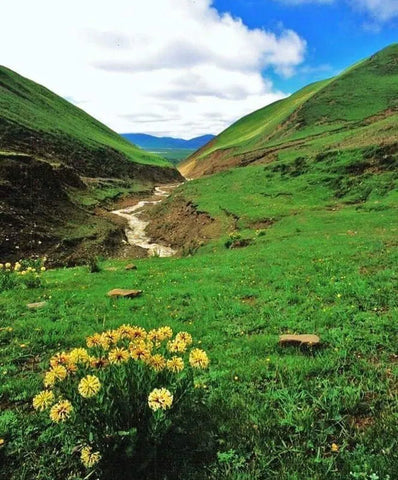
Photographed by naturalist Alessandro Boesi
Messenger of God
The unique natural environment of the snow-capped mountains naturally becomes a fertile ground for exotic flowers and plants to grow. Due to their unique growth habits, striking colors, shapes, and diverse uses, the flowers here stand out like oracles, blooming at the top of the mountains and attracting attention. They exude a unique and extraordinary charm in the serene tranquility, making this place a paradise for nature lovers.
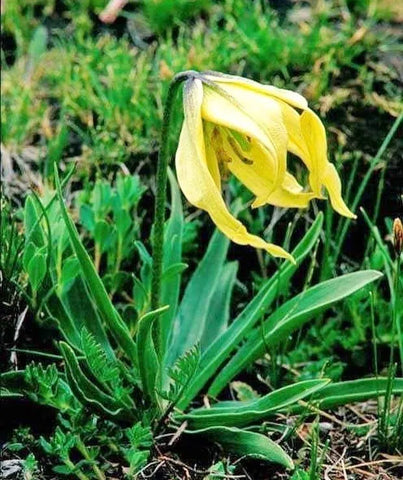
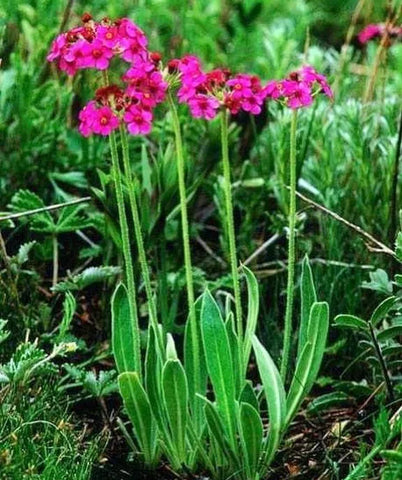

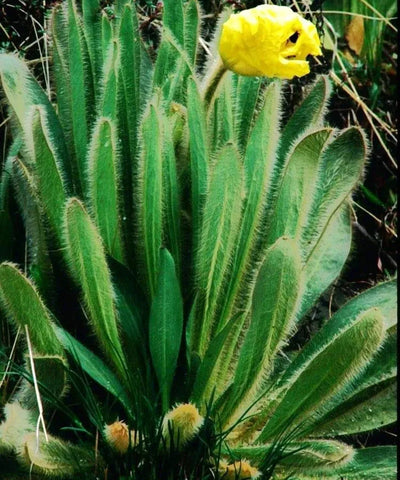
The rich variety of plant species play a crucial role in maintaining the biodiversity of the plateau, and it is essential to identify, differentiate, and protect these rare and beautiful plants in order to preserve the unique ecosystem of the Qinghai-Tibet Plateau.
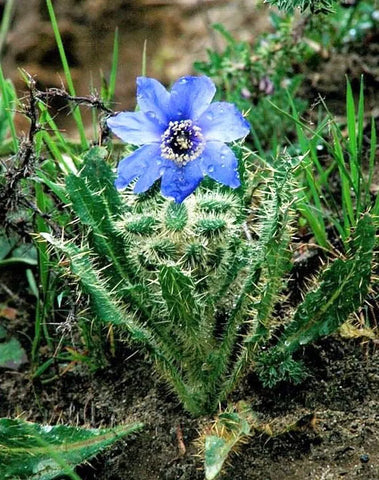
The colorful flowers, as a beautiful symbol, have permeated into various forms of cultural arts in the Tibetan region, from secular daily life to temple religious rituals. Flowers are widely used in various occasions. Similar to the natural mineral pigments used in Tibetan thangka paintings, flowers add a dazzling color to human civilization. In the sacred Tibetan culture, whether it is the unique natural properties of plants or the spiritual meanings they contain, they are vividly expressed and interpreted.
After several trips to Tibet, a deep impression was left in my mind. In Tibet, whether it is a residence or a temple, there always seems to be flower pots full of blooming colorful flowers by the windows.

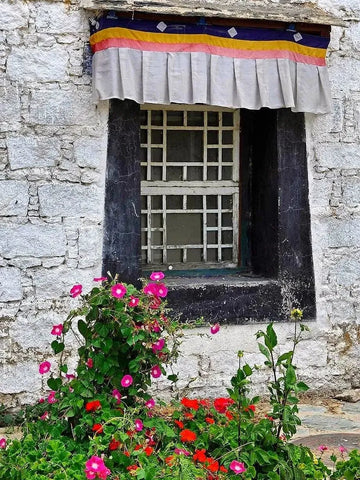
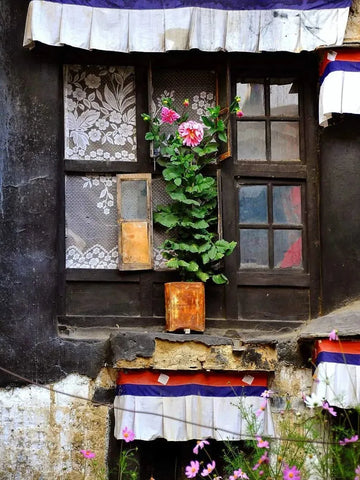

Window Flowers, photographed by Walter Wong
In early spring of a certain year, at Songzanlin Monastery in Shangri-La, I found a secluded spot outside the monks' quarters to sit and rest at noon. There were no tourists around, nor did I see any monks. Suddenly, I heard a burst of lively laughter and playful sounds in the distance, seemingly coming from a winding alley. Entranced for a moment, I suddenly saw two young monks, aged around ten, running and chasing each other right before my eyes. Each of them held a pot of fresh flowers, which swayed back and forth beautifully as they ran.
If a photographer had been there with me at that moment, I believe the scene before us would have been a precious material that would have excited them and urged them to capture it. But I didn't take any photos, as my memories didn't need physical evidence. The blooming flowers and the deep crimson robes of the two young monks, burning like fire, created a pure and beautiful image that seemed like a scene from a movie, and it will always remain vividly in my memory. It has become an eternal moment.
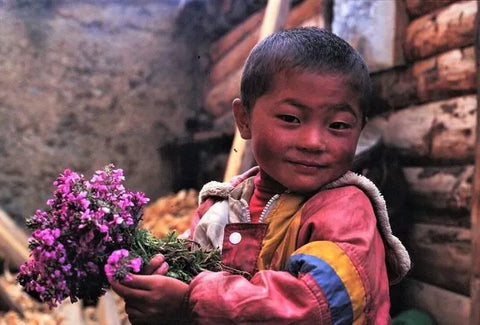
A Tibetan child holding a bouquet of flowers, Photography by Alessandro Boesi
One year, a friend recommended me to visit a friend in Labrang Monastery in Xiahe. Out of a sense of etiquette, I was unsure of what gift to bring, as something too expensive or too casual would not be appropriate. Suddenly, I saw a vendor selling flowers on the street, so I picked out two pots. One pot had not yet bloomed, while the other was in full bloom. I thought that my friend in the monastery could place it on the windowsill, allowing them to enjoy the blooming flower while also looking forward to the one that hadn't bloomed yet. It would be something interesting for them. When we met, my monk friend was very happy. Even long after my journey back to Beijing, he would occasionally send me photos of the blooming flower in the pot.
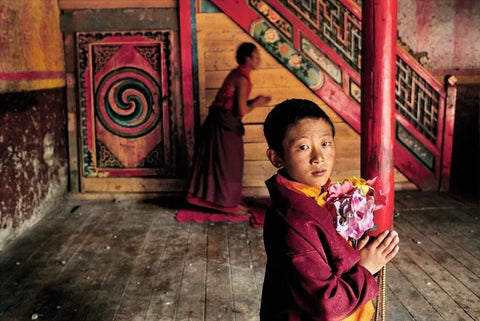
A young monk in Lhasa, Tibet. Photo by Steve McCurry.
Flowers may not speak, but they have a silent understanding. Beauty and friendship transcend language and distance, and are communicated through flowers.
Blue Lotus
Xu Wei's song, the classic "Blue Lotus", contains the following lyrics: "In the free world of the heart, so clear and lofty, blooming perpetually without withering, the Blue Lotus." His songs seem especially suitable for listening to on a journey, as they are songs for travelers, both in body and spirit. The melody harbors a lofty and open artistic conception, as if the inner space of a person will open layer by layer like the petals of a lotus, undergoing various purifications, allowing the mind to reach a clear and optimistic state, generating a new outlook on life, as if experiencing a rebirth.
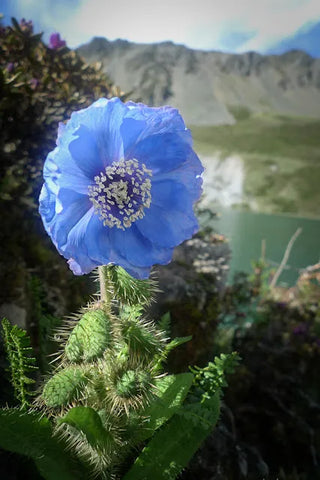
Blue flowered Artemisia annua Photography: Yang Xiao
I used to think that the blue lotus in the lyrics was a different type of flower from the white lotus we see in our daily lives, and that it only appeared in a peculiar blue color in the special natural environment of the snowy plateau. It wasn't until I read the botanical survey notes of British naturalist Joseph Dalton Hooker on the Yunnan-Guizhou Plateau in southwest China that I realized the blue lotus is not a blue-colored lotus flower, but a unique plant that grows in high-altitude regions called the blue-flowered artemisia.
In Buddhist belief, the lotus is an important symbol representing beauty, wholeness, spiritual purity, transcendence, and awakening.

Lotus Flower Photography: Yumi
According to Buddhist teachings, all sentient beings can transcend darkness and suffering through diligent practice, revealing their true and perfect nature. Like a blooming lotus, humans can develop the virtues of the Buddha. The lotus, with its pure appearance, carries a unique metaphor - that every life has the potential for enlightenment. The lotus represents a higher spiritual state and also symbolizes the Buddha's promise to help sentient beings realize their perfect potential.
In various forms of Tibetan cultural art such as exquisite paintings, textiles, woodwork, lacquerware, and gold and silverware, the lotus is widely used as a decorative pattern due to its elegant and pure image as well as its profound symbolic meaning.
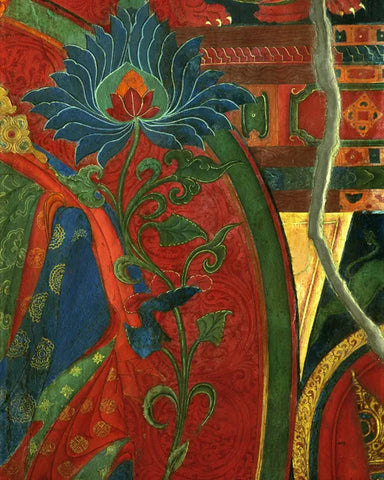
A blue lotus on a 15th-century temple wall painting
The cracks on the painting are due to damage from an earthquake
Photograph by Kenneth Parker
The popularity of lotus in Buddhist culture and art provides practitioners with inspiration for their practice and also carries a motivating power, giving the practitioners courage and uplifting their spirits - the awakened mind will rise like a blooming lotus from the impurities of samsara.
The vehicle of faith
There are two grand festival ceremonies in Tibet that are associated with two special "flowers." These "flowers" are not actual plants, but rather an art form, a vessel for the spirit.
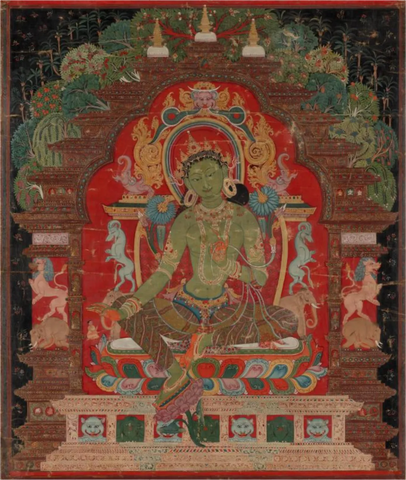
Green Tara Thangka 13th century Tibet
Held by the Cleveland Museum of Art
Originating in the 7th century, Thangka is a exquisite scroll painting that uses satin, leather, and cotton as mediums to depict important Buddhist themes. It is used for worshiping deities and also as a beautiful decoration in the daily life of Tibetan people. The outstanding aesthetic charm and narrative potential make Thangka a brilliant and unique form of Tibetan art that combines faith and aesthetics.
Thangka is seen as the most beautiful "flower" blooming on the snowy plateau. Perhaps the most vivid and intense feeling of this beauty can be experienced during the grand Sun Buddha Festival. The huge Thangka, carefully rolled up, is annually carried by monks from the temple and unfolded amidst the crowd. As the first light of the east shines on the Earth, the meticulously painted Thangka, under the vast sky, illuminates with a myriad of light, creating a moment of beauty and divinity. In this grand way, Tibetan people express their reverence for their faith, seek blessings, and purify their body and mind.
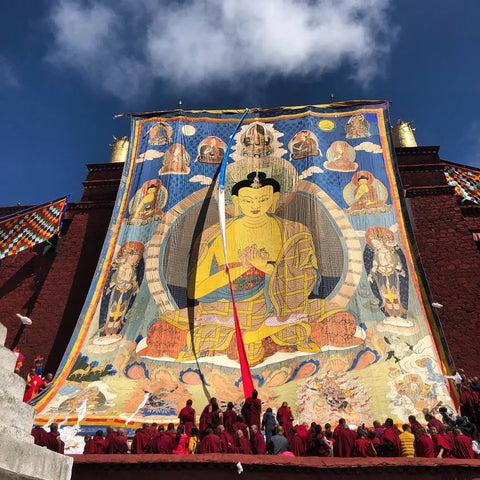
Gandan Monastery Buddha Exhibition Photography: Emmy Schoorl
Another way to express a sincere heart is through butter flowers.
There are various legends about the origin of butter flowers in Tibet. The most memorable one is related to a dream of the great master Tsongkhapa. It is said that during a prayer ceremony in Lhasa, Tsongkhapa saw a colorful auspicious cloud, vibrant flowers, and countless twinkling lights in his dream one night. This extraordinary and magnificent scene filled the master with joy, seeing it as a good omen. So he instructed the monastery artists to recreate the dream scene using butter, and used it as an offering to the Buddha. In Tibetan, butter flowers mean "flower offering".
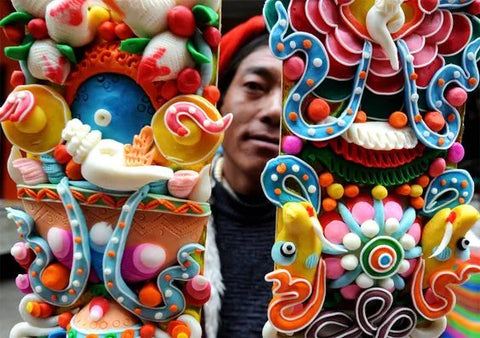
Butter Sculpture Flowers - Image: tibettravel.org
Every year on the fifteenth day of the first lunar month, Ta'er Temple holds a grand butter sculpture art exhibition. Butter sculptures are made from butter, an important food in the daily life of the plateau people. Through a series of intricate and complex handcrafted processes by skilled monks, butter magically transforms into beautiful and exquisite flowers. Butter sculptures feature a rich variety of subjects, including natural scenery, Buddhist stories, and Tibetan folklore.
Combining delicate, intricate, magnificent, and sacred qualities, butter sculptures have become an extraordinary art form that embodies the wisdom of the Tibetan people and symbolizes beauty and aspirations.
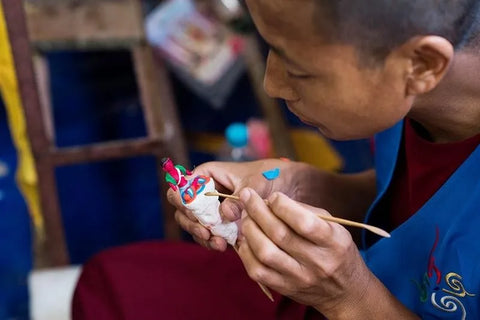
A monk making butter sculptures. Picture: Long ri business
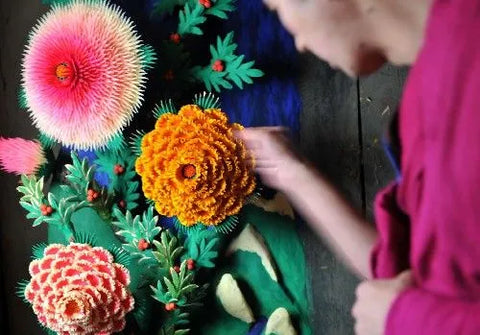
A monk making butter sculptures. Picture: Pinterest
Wolfbane flower, is another type of flower closely connected with the Tibetan spirit, and although its name may sound fierce, its uses are incredibly important.
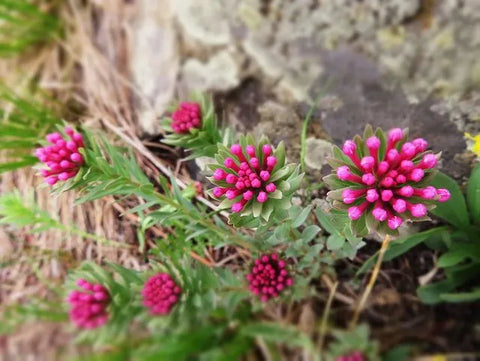
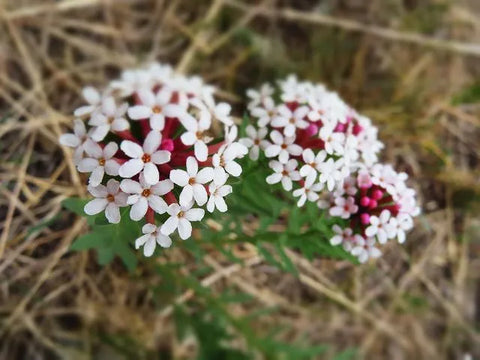
Wolf's Bane flower Photography: floramongolia
Cultural scholar Zhu Yong in his work "Tibet: Above the Distant" carefully examines the printing process of the scriptures at Dege Printing House in his article "Dege on Woodcuts." He describes it as follows: "More than seventy percent of Tibetan cultural scriptures are stored in Dege Printing House. Dege Printing House undertakes the dual mission of collecting ancient scriptures and printing and disseminating them. It is the spiritual belief of the Tibetan people. The pages of the scriptures are made from a plant called 'Ajok Rok' found on the Dege grasslands. Its scientific name has a literary touch, called 'mystical wolf poison,' is a medicinal herb. After a series of processes such as washing, cutting, steaming, beating, pulping, papermaking, and drying, this medicinal herb is transformed into a slightly yellowish 'Tibetan paper.' Under the sunlight, the plant's veins are faintly visible. Flicking through the pages of scriptures printed on this paper while softly reciting the mysterious symbols on the pages, each chanting monk has such an elegant and ancient demeanor, like a figure in a mural. The medicinal properties of 'mystical wolf poison' not only protect the ancient scriptures from pests and rodents but also bless the monks with clear eyesight and clear minds, free from eye ailments. And all of this is contained in its faint fragrance, a scent from the depths of the earth, transformed into pages after many twists and turns, harmonizing with the beautiful words on the scriptures, lingering in people's hearts."

Reading Scripture - Image: Joo - Hee
When a plant is naturally nurtured and born between heaven and earth, collected, arranged, ground, fermented, and completes its life, it is reborn in another form. It becomes plain and simple white paper, carrying the words and sentences, allowing wisdom to deeply root in the hearts of believers as they chant. It is like a miniature cycle unfolding.
The transformation from plant to scripture allows us to deeply appreciate the spirituality of plants. Plants are silent and serene, yet they are constantly communicating with humans. If people accumulate merit through good deeds, plants are also accumulating their own merit in this spiritual way, nourishing humanity with their own lives.

Buddhist Canon at Labrang Monastery, Photography by Dominic Lüdin
Flower of Healing
The symbol of happiness, beauty, good luck, and auspiciousness, the Tibetan peony flower, and the highly valuable saffron flower are two of the most recognizable and well-known flowers in Tibet. However, in fact, many plants and flowers in Tibet have unique medicinal values.
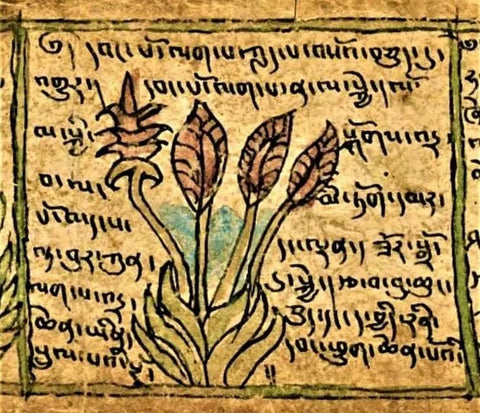
A page of ancient Tibetan medical manuscript, Photography: Alessandro Boesi
With the introduction of Buddhism from India to China, the ancient Indian classical medical treatment of Ayurveda also influenced Tibetan medicine. In the healing system of Ayurveda, plant-based healing is a very important part. Tibetan traditional medicine, influenced by Ayurveda medicine and traditional Chinese medicine, emphasizes the balance of body and mind, reflecting the close connection between humans and nature.
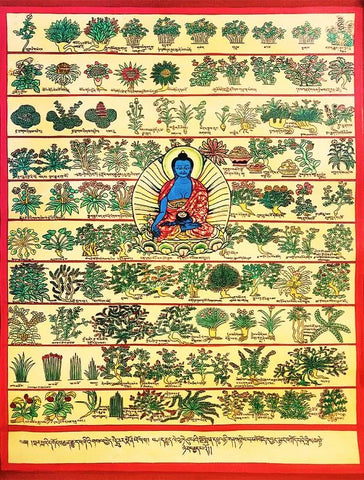
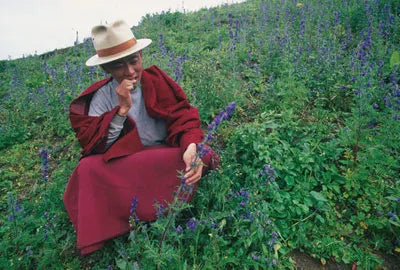
Photography by Alessandro Boesi
With over 2,500 years of development, Tibetan medicine has developed a nearly complete system of treatment. Tibetan medicine believes that every plant can be used as medicine, and each plant can treat a specific disease. Therefore, when collecting medicinal herbs, one must be extremely careful to only take what is needed for treatment without harming them. This reflects a respect for life, not only for the lives of patients, but also for plants, as all living beings are respected equally on Earth.

Photography: Alessandro Boesi
Unity of Heaven and Humanity
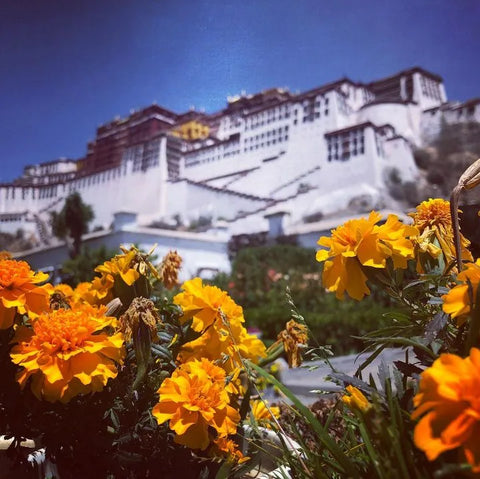
The flowers closely connected to the Tibetan spirit bloom with the most beautiful and magnificent colors on the plateau.

Photography by Alessandro Boesi.

